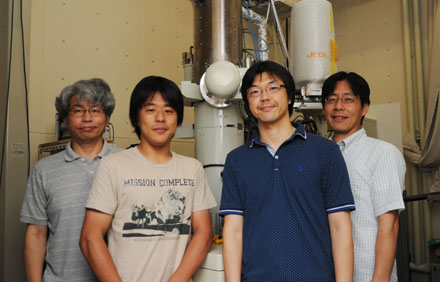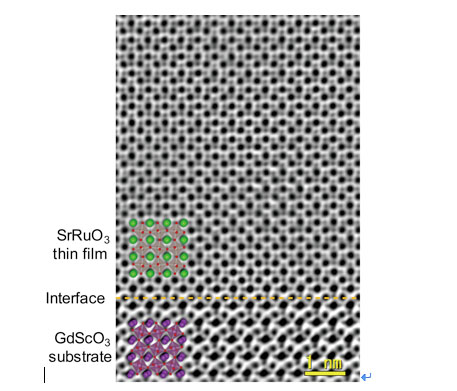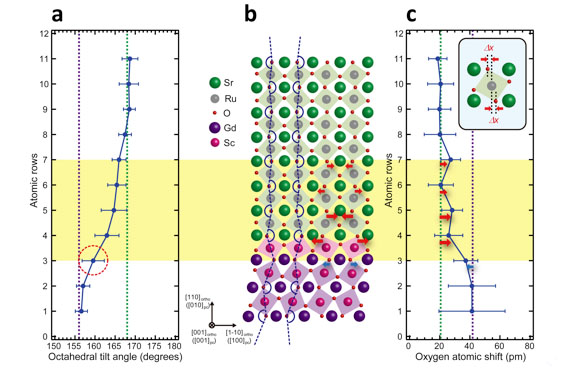Mr. Aso, R., Prof. Kurata, H., Assist Prof. Kan, D., Prof. Shimakawa, Y. “Atomic Level Observation of Octahedral Distortions at the Perovskite Oxide Heterointerface” (Published in “Scientific Reports” 16 July 2013)
|
Atomic Level Observation of Octahedral Distortions
Published in “Scientific Reports“(Online Publication, July 16, 2013).
Mr. Aso, R. and Prof. Kurata, H. (Electron Microscopy and Crystal Chemistry, Advanced Research Center for Beam Science)
Assist Prof. Kan, D. and (Advanced Solid State Chemistry, International Research Center for Elements Science) |
Prof. Kurata, H., Mr. Aso, R., Assist Prof. Kan, D., Prof. Shimakawa, Y. (from Left) |
|||
|
Mr. Ryotaro Aso, Assistant Professor Daisuke Kan, Professor Yuichi Shimakawa, and Professor Hiroki Kurata in Institute for Chemical Research have employed state-of-the-art high resolution HAADF- and ABF-STEM imaging techniques with minimized image distortions to the heterointerface between a SrRuO3 (SRO) thin film and a GdScO3 (GSO) substrate, and revealed that the octahedral tilt angle mismatch is accommodated within only four unit cells in the vicinity of the SRO/GSO interface. |
||||
|
Recent advances in heterostructures based on perovskite oxides have been some of the most exciting developments in functional materials. For perovskite oxides, ABO3, slight octahedral distortions have close links to functional properties. While perovskite oxide heterostructures offer a good platform for controlling functionalities, atomistic understanding of octahedral distortion at the interface has been a challenge as it requires precise measurements of the atomic positions of oxygen. The research team demonstrated an approach to clarify distortions at an atomic level using annular bright-field (ABF) imaging in aberration-corrected scanning transmission electron microscopy (STEM), which provides precise mappings of cation and oxygen atomic positions from distortion-minimized images (Figure 1). This technique revealed significant distortions of RuO6 and ScO6octahedra at the heterointerface between a SrRuO3 film and a GdScO3 substrate. The research team also found that structural mismatch was relieved within only four unit cells near the interface by shifting the oxygen atomic positions to accommodate octahedral tilt angle mismatch (Figure 2). The present results underscore the critical role of the oxygen atom in the octahedral connectivity at the perovskite oxide heterointerface. Such a tiny but significant modification of the structure is key to yield fascinating functional properties. The present findings are expected to definitely lead to further experimental and theoretical understanding of oxide-based heterointerfaces. |
||||
|
Figure 1. Atomic-scale structural characterization of SRO/GSO heterostructure by high-resolution ABF-STEM technique. |
||||
|
Figure 2. Atomic-scale view of the octahedral distortions due to the structural mismatch accommodation at SRO/GSO heterointerface. |
||||
| This work was partially supported by a Grant-in-Aid for Scientific Research (Grant No.24760009), and a grant for the Joint Project of Chemical Synthesis Core Research Institutions from the Ministry of Education, Culture, Sports, Science and Technology of Japan. The work was also supported by the Japan Science and Technology Agency’s CREST program. | ||||
 Institute for Chemical Research, Kyoto University
Institute for Chemical Research, Kyoto University International Joint Usage Research Center
International Joint Usage Research Center

